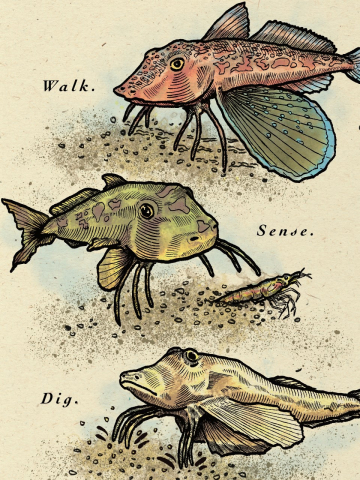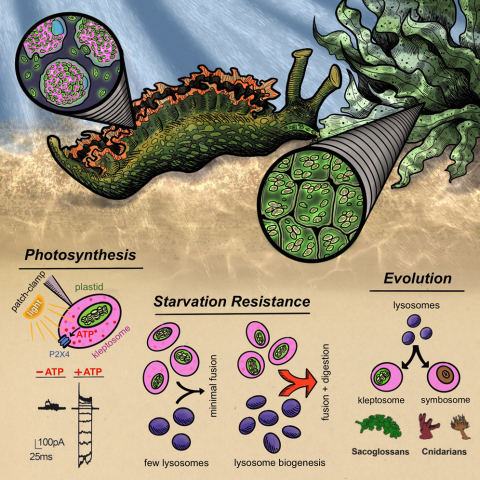Research
Origins of novel traits using sea robins
How do major novel traits arise during evolution?
One remarkable example of a major novel trait is the ‘leg’-like sensory appendages unique to the family of fishes known as sea robins. Sea robins are unusual “walking” fishes that use leg-like appendages to navigate the seafloor. We have shown that legs are bona fide sense organs that mediate the unique ability to localize and uncover buried prey. We are probing the developmental and physiological basis of these novel sense organs as a striking example of a major trait gain in evolution, to understand how molecular, cellular, and tissue-scale adaptations integrate to produce novel organismic traits and behavior.
Origins of novel organelles using sea slugs
How do novel organelles arise?
We are studying these questions using “photosynthetic” Sacoglossan sea slugs, which consume macroalgae and retain stolen chloroplasts in specialized cells where they can remain functional for months. We are exploring the molecular and cellular basis underlying retention and maintenance of these stolen organelles to better understand how new organelles become integrated into host cell physiology.

